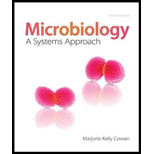
Microbiology: A Systems Approach
4th Edition
ISBN: 9780073402437
Author: Marjorie Kelly Cowan Professor
Publisher: McGraw-Hill Education
expand_more
expand_more
format_list_bulleted
Concept explainers
Question
Chapter 22.4, Problem 16AYP
Summary Introduction
To describe:
The life cycle of Schistosoma mansoni and S. japonicum and also describes the importance of these organisms in world health.
Introduction:
Helminthic infections are caused by “helminths” (
Expert Solution & Answer
Want to see the full answer?
Check out a sample textbook solution
Students have asked these similar questions
In one paragraph show how atoms and they're structure are related to the structure of dna and proteins. Talk about what atoms are. what they're made of, why chemical bonding is important to DNA?
What are the structure and properties of atoms and chemical bonds (especially how they relate to DNA and proteins).
The Sentinel Cell: Nature’s Answer to Cancer?
Chapter 22 Solutions
Microbiology: A Systems Approach
Ch. 22.1 - Prob. 1AYPCh. 22.1 - Prob. 2AYPCh. 22.2 - Prob. 3AYPCh. 22.2 - Prob. 4AYPCh. 22.3 - Prob. 2CFCh. 22.3 - List the possible causative agents for the...Ch. 22.3 - Prob. 6AYPCh. 22.3 - Name one distinct feature for each of the acute...Ch. 22.3 - Prob. 8AYPCh. 22.3 - Prob. 9AYP
Ch. 22.3 - Differentiate among the main types of hepatitis...Ch. 22.4 - Prob. 11AYPCh. 22.4 - Prob. 12AYPCh. 22.4 - Prob. 13AYPCh. 22.4 - Prob. 14AYPCh. 22.4 - Describe the type of disease caused by Trichinella...Ch. 22.4 - Prob. 16AYPCh. 22 - Prob. 1CFCh. 22 - Food moves down the GI tract through the action of...Ch. 22 - Prob. 2MCQCh. 22 - Gastric ulcers are caused by a. Treponema...Ch. 22 - Prob. 4MCQCh. 22 - Prob. 5MCQCh. 22 - Prob. 6MCQCh. 22 - This microorganism is commonly associated with...Ch. 22 - Prob. 8MCQCh. 22 - Prob. 9MCQCh. 22 - Prob. 10MCQCh. 22 - Prob. 11TFCh. 22 - Giardia lamblia is a water-borne, flagellated...Ch. 22 - Prob. 13TFCh. 22 - Prob. 14TFCh. 22 - Enterobius vermicularis commonly known as the...Ch. 22 - Prob. 1CTQCh. 22 - Prob. 2CTQCh. 22 - Prob. 3CTQCh. 22 - Prob. 4CTQCh. 22 - Prob. 5CTQCh. 22 - Prob. 6CTQCh. 22 - Prob. 7CTQCh. 22 - a. Describe methods used to definitively diagnose...Ch. 22 - Prob. 9CTQCh. 22 - Prob. 10CTQCh. 22 - Prob. 1CCCh. 22 - Prob. 2CCCh. 22 - Prob. 3CCCh. 22 - Prob. 4CCCh. 22 - Prob. 5CCCh. 22 - Prob. 6CCCh. 22 - Prob. 7CCCh. 22 - Prob. 8CCCh. 22 - Prob. 1VCCh. 22 - Prob. 2VCCh. 22 - Prob. 1CM
Knowledge Booster
Learn more about
Need a deep-dive on the concept behind this application? Look no further. Learn more about this topic, biology and related others by exploring similar questions and additional content below.Similar questions
- Molecular Biology Question You are working to characterize a novel protein in mice. Analysis shows that high levels of the primary transcript that codes for this protein are found in tissue from the brain, muscle, liver, and pancreas. However, an antibody that recognizes the C-terminal portion of the protein indicates that the protein is present in brain, muscle, and liver, but not in the pancreas. What is the most likely explanation for this result?arrow_forwardMolecular Biology Explain/discuss how “slow stop” and “quick/fast stop” mutants wereused to identify different protein involved in DNA replication in E. coli.arrow_forwardMolecular Biology Question A gene that codes for a protein was removed from a eukaryotic cell and inserted into a prokaryotic cell. Although the gene was successfully transcribed and translated, it produced a different protein than it produced in the eukaryotic cell. What is the most likely explanation?arrow_forward
- Molecular Biology LIST three characteristics of origins of replicationarrow_forwardMolecular Biology Question Please help. Thank you For E coli DNA polymerase III, give the structure and function of the b-clamp sub-complex. Describe how the structure of this sub-complex is important for it’s function.arrow_forwardMolecular Biology LIST three characteristics of DNA Polymerasesarrow_forward
- Molecular Biology RNA polymerase core enzyme structure contains what subunits? To form holo enzyme, sigma factor is added to core. What is the name of the structure formed? Give the detailed structure of sigma factor and the function of eachdomain. Please help. Thank youarrow_forwardMolecular Biology You have a single bacterial cell whose DNA is labelled with radioactiveC14. After 5 rounds of cell division, how may cells will contain radioactive DNA? Please help. Thank youarrow_forward1. Explain the structure and properties of atoms and chemical bonds (especially how they relate to DNA and proteins). Also add some pictures.arrow_forward
- 1. In the Sentinel Cell DNA integrity is preserved through nanoscopic helicase-coordinated repair, while lipids in the membrane are fortified to resist environmental mutagens. also provide pictures for this question.arrow_forwardExplain the structure and properties of atoms and chemical bonds (especially how they relate to DNA and proteins). Also add some pictures.arrow_forwardIn the Sentinel Cell DNA integrity is preserved through nanoscopic helicase-coordinated repair, while lipids in the membrane are fortified to resist environmental mutagens. also provide pictures for this question.arrow_forward
arrow_back_ios
SEE MORE QUESTIONS
arrow_forward_ios
Recommended textbooks for you
 Comprehensive Medical Assisting: Administrative a...NursingISBN:9781305964792Author:Wilburta Q. Lindh, Carol D. Tamparo, Barbara M. Dahl, Julie Morris, Cindy CorreaPublisher:Cengage Learning
Comprehensive Medical Assisting: Administrative a...NursingISBN:9781305964792Author:Wilburta Q. Lindh, Carol D. Tamparo, Barbara M. Dahl, Julie Morris, Cindy CorreaPublisher:Cengage Learning- Case Studies In Health Information ManagementBiologyISBN:9781337676908Author:SCHNERINGPublisher:Cengage



Comprehensive Medical Assisting: Administrative a...
Nursing
ISBN:9781305964792
Author:Wilburta Q. Lindh, Carol D. Tamparo, Barbara M. Dahl, Julie Morris, Cindy Correa
Publisher:Cengage Learning


Case Studies In Health Information Management
Biology
ISBN:9781337676908
Author:SCHNERING
Publisher:Cengage

12DaysinMarch, Genital Infections for USMLE Step One; Author: Howard Sachs;https://www.youtube.com/watch?v=66zR_FypVFQ;License: Standard youtube license